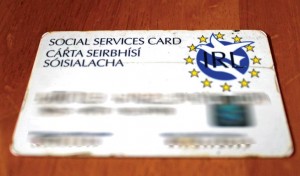
There are a few popular certainties taken for granted and rarely subjected to analysis.
In Ireland today you’re likely to hear: “Lazy people collect the dole and avoid searching for work”, “There’s work out there if you really want to find it” and “Benefit fraud is a massive drain on the system.” How true are these claims?
December 2013 saw the publication of The Irish Times public perceptions poll, conducted by Ipsos/MRBI. The specific purpose of the survey was to discover popular opinions on current affairs. Importantly, those who were polled were encouraged to guess their answers if they didn’t know for sure.
In relation to welfare and state support, the vast majority (62%) of those polled felt that the unemployed were the chief recipients of welfare, ahead of those receiving child support and pensions. In fact, pensioners take the largest margin, followed by parents requiring state assistance. Participants were asked who receives the most from the public purse in terms of direct payments to them and the majority said politicians when in fact the correct answer is welfare recipients.
Again benefit fraud may be more of a threat in our imaginations than in reality. Figures published in November 2013 indicate that anonymous reports of welfare fraud have increased by an enormous 2,500% in five years. 16% of the 21,000 reports in 2013 resulted in the stopping of payments. Around 1.469 million people receive a weekly payment from the Department of Social Protection and as of November 2013, 3,360 payments were stopped for suspected fraud, which certainly seems to indicate a minority of offenders.
The degree of error and misapprehension among the public has led commentators such as psychologist Dr Maureen Gaffney to describe the public’s view of the nation as a whole as dystopian and generally obsessed with the negative, to the point where she questions the style and manner of news reporting.
This is not to say that things are rosy and people are purely deluded. The now-infamous HSE underspends of 2007 and 2010 have primed an austerity-focussed government to proceed with the slashing of the health service budget. There are certain popular opinions which turn out to be true, for instance that there has been an overall increase in welfare spending.
The level of child support required nationwide is rarely the subject of complaint. It was estimated in July 2013 that 115,000 families in the low income bracket would automatically receive back to school clothing and footwear allowances. There were, however, 58,000 additional manual applications, about 1,000 per day, by mid August. The €49,000,000 allocated to cover these costs was swiftly taxed to its limit.
What is notable here is that the reason for the increase in people occupying the low income bracket (and therefore requiring child support) was something that people were correct about in their assumptions: the largest drop in overall income has been within the age group 18 to 64. Everyone knows there are more parents on the breadline. That much is far from guesswork.
By Rúairí Conneely

